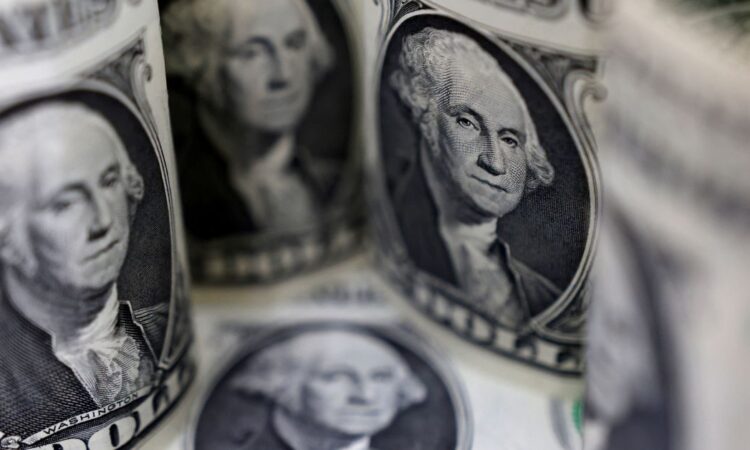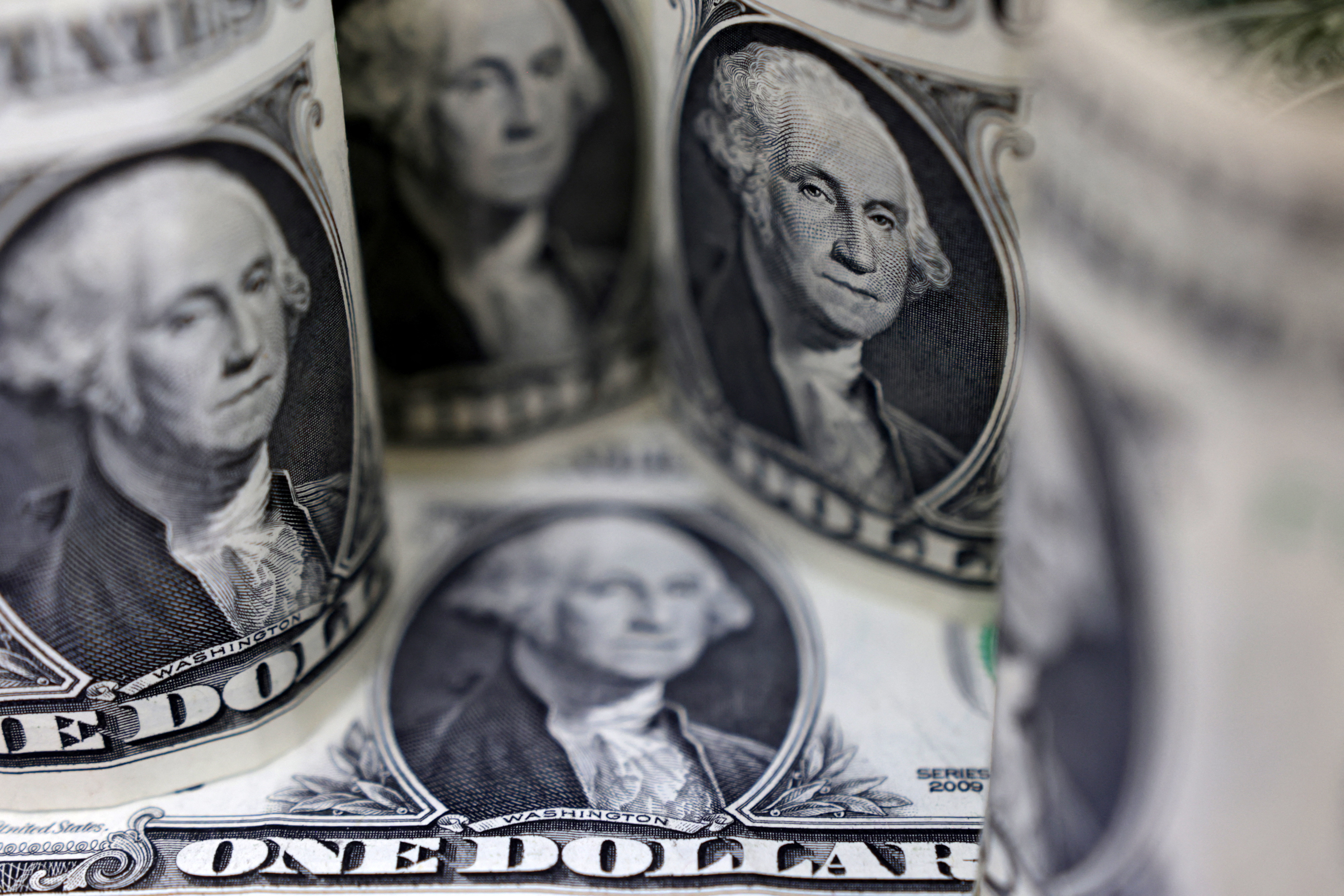

U.S. Dollar banknotes are seen in this illustration taken July 17, 2022. REUTERS/Dado Ruvic/Illustration/File photo Acquire Licensing Rights
LONDON, Oct 17 (Reuters) – The U.S. dollar swayed in a tight range on Tuesday as traders took stock of developments in the Middle East and braced for speeches this week by central bank officials, including Federal Reserve Chair Powell, to gauge the policy outlook.
The yen was pinned close to the key 150 per dollar level, keeping investors on edge for any signs of intervention by the Japanese authorities.
The yen last fetched 149.62 per dollar, having slipped to 150.17 on Oct. 3, the weakest in a year, before getting some relief in a brief rally.
Japan’s top financial diplomat Masato Kanda said the yen was still perceived as a safe haven asset like the dollar and the Swiss franc despite its recent weakness, and was benefiting from demand due to the conflict in the Middle East.
Israel’s shekel on Monday breached the key level of four per U.S. dollar for the first time since 2015 on jitters over Israel’s war with the Palestinian militant group Hamas. It was last at 4.024 per dollar in choppy trading on Tuesday.
Valentin Marinov, Credit Agricole CIB global head of G10 FX research and strategy, said the main drivers continued to be ongoing tensions in the Middle East and elevated global bond yields.
“The key question for the markets remains the scope for further escalation,” Marinov said.
“As long as oil prices remain well behaved in the face of geopolitical tensions, that will mean that cost-push inflation may not re-accelerate and, by implication, the Fed could stick to its recent more-dovish rhetoric ruling out further rate hikes.”
The dollar index , which measures the U.S. currency against six rivals, inched 0.1% higher to 106.37, after dropping 0.4% on Monday.
Investor attention will firmly be on the Federal Reserve’s Powell, who is due to speak on Thursday, during a busy week of speeches by regional bank heads. Fed officials will enter into a blackout period on Oct. 21 before the central bank’s Oct. 31–Nov. 1 meeting.
Federal Reserve Bank of Philadelphia President Patrick Harker said on Monday the central bank should not create new pressure on the economy by increasing the cost of borrowing.
Fed funds futures traders are pricing in just a 10% chance that the Fed raises rates at its November meeting, with around a 33% chance of a hike by December, according to the CME’s FedWatch tool.
Christopher Wong, currency strategist at OCBC, said the dollar was likely caught in a range for now.
“Higher for longer (rates), relative U.S. growth resilience and fears of broadening conflict are some of the factors that may underpin support for the dollar,” Wong said.
“But less-hawkish Fed speaks suggests the Fed may be setting the stage for an extended pause. This may mitigate dollar upside.”
POUND, KIWI DIP AS DATA DAMPENS HIKE EXPECTATIONS
The pound dipped after growth in British workers’ regular pay slowed from a previous record high and job vacancies also dropped, although the publication of some labour market data, including the unemployment rate, was delayed until next week.
“The slimmed down version of the data highlighted that the labour market is cooling down,” CA CIB’s Marinov said.
“It corroborates the view that the Bank of England is done hiking rates.”
Sterling was last at $1.2175, down 0.3% on the day, after jumping 0.6% on Monday.
The New Zealand dollar fell 0.6% to $0.5893 after data on Tuesday showed consumer inflation hit a two-year low, reducing expectations the central bank will hike the cash rate further in November.
Meanwhile, the euro was down 0.1% at $1.0545.
European Central Bank chief economist Philip Lane said the central bank would need some time, possibly until next spring, before it could be confident that inflation was returning to its 2% target, according to an interview with a Dutch newspaper.
The Australian dollar rose 0.2% to $0.6357. Australia’s central bank considered raising rates at its recent policy meeting but judged there was not enough new information to warrant a move, minutes of the Reserve Bank of Australia’s Oct. 3 policy meeting showed.
Reporting by Samuel Indyk in London and Ankur Banerjee in Singapore
Editing by Shri Navaratnam, Kim Coghill and Gareth Jones
Our Standards: The Thomson Reuters Trust Principles.






